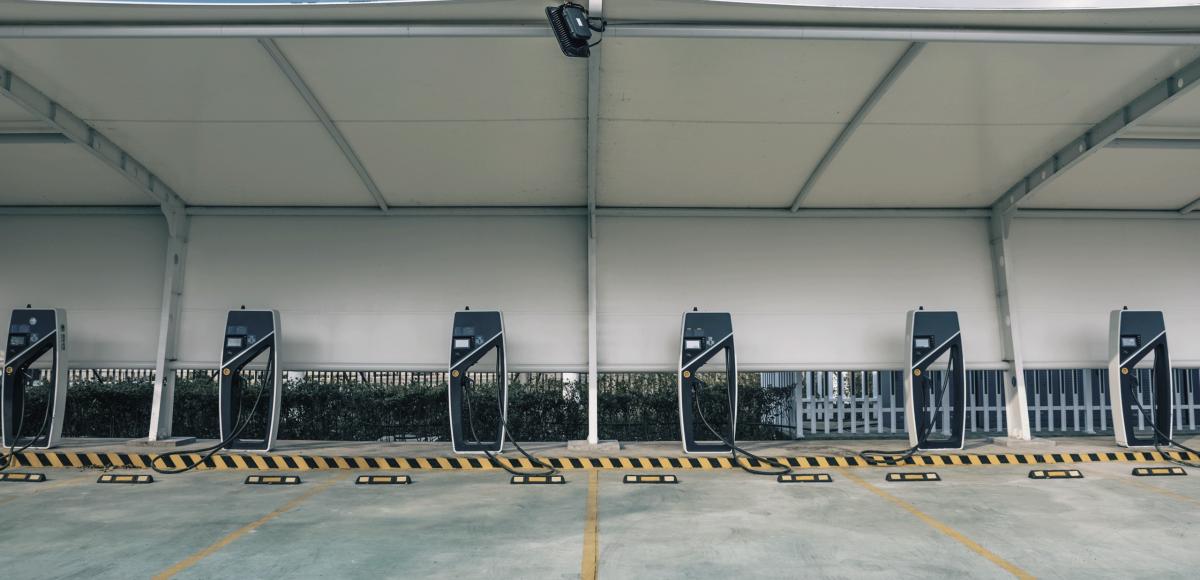
Going all electric
Key challenges for fleet electrification
EV Fleet Market Overview
We are at the beginning of a mobility revolution, and fleets are a crucial part of this transition. The exponential growth of EVs is no secret. For instance, 63 million fleet vehicles in Europe make up 20% of all vehicles. More than 40% of all vehicle miles travelled and 50% of all emissions from road transportation are represented by this. By 2030, there will be 73 million fleet vehicles in the EU, including both electric vehicles (EVs) and vehicles powered by internal combustion engines (ICE). If we focus on only the electrified segment of fleet vehicles, an anticipated 24-fold increase will bring actual numbers in Europe to 10.5 million by 2030, up from 420,000 vehicles today.
By the year 2040, 15 million EVs are expected to be a part of corporate fleets in the US. The rapid expansion
of EV fleets is advantageous because it significantly improves the environment. Nearly 25% of all greenhouse
gas emissions in Europe and 23% in the US are attributed to road transport. Reaching national greenhouse gas
targets will be significantly aided by replacing ICE vehicles with zero-emission vehicles. Government policies are
encouraging EV fleet conversions since there is so much to gain from doing so. These policies include both laws
that demand progress and incentives like tax breaks and subsidies. However, there are a lot more reasons for
electrifying fleets.
Fleet operators can reduce TCO for corporate owned or leased vehicles, avoid “pollution penalties,” increase
employee convenience, and advance a corporate social responsibility policy to reduce carbon emissions and
become more of a “green” brand.
As always, change involves challenges with impacts proportional to the size of the change itself. Fleet
operators face at least three predominant challenges when contemplating the transition to electric vehicles:
- the inevitable complexity of understanding and planning for a new fuel source.
- market barriers, noticeable in the significant upfront additional capital needed to purchase and deploy the electric vehicles and associated charging infrastructure.
- operational challenges to progressively transition the fleet while ensuring its smooth and robust daily service.
1. The Ecosystem
Fleet electrification entails more than just replacing a fossil-fuelled vehicle with an electric car. Operators must carefully consider and plan the integration and coordination of numerous components in order to achieve a successful transition to a zero-emissions fleet:
- Electric vehicles that can accommodate their needs for mobility
- Charging stations
- Monitoring and fleet management software
- Provision of renewable or clean energy
- Grid and utility infrastructure
- Training and education
The market for electric vehicles is still somewhat fragmented; fleet operators considering a switch to electric vehicles may need to collaborate with a number of vendors and suppliers, each with their own unique offerings, to evaluate and choose the technology options that best suit their transportation requirements in this complex, constantly shifting ecosystem.
2. Upfront costs
To make the switch to electric vehicles, a non-trivial financial expenditure is needed upfront to pay for the
incrementally higher cost of electric vehicles compared to fossil-fuel vehicles, the cost of charging stations, and
any necessary changes to the electric grid for the energy supply. There are currently a number of funding alternatives available from the EU, state, and municipal governments, as well as utilities, to subsidise both the electric vehicles and related infrastructure for charging them.
However, it might be difficult for fleet operators to discover the best financing choice and to put in a strong application. Additionally, a variety of innovative ownership-and-operation business models are emerging as the market for e-mobility solutions grows. These methods are designed to reduce the upfront cost by making it a recurrent annualised charge that fleet operators can pay over time while still saving money on fuel and maintenance. These cutting-edge business concepts include "energy-as-a-service" (a fleet operator owns the vehicles, while a third party controls the infrastructure for charging and energy), "mobility-as-a-service," and others. Several of these financing approaches are being supplied by new companies and have not yet been shown to be efficient on a wide scale, despite their enormous potential.
3. Operations
The implementation of a fleet electrification project might take months or even years, possibly disrupting the entire transportation network. Large MHDV (Medium and Heavy Duty Vehicles) fleets may experience the shift in stages. Some vehicles and routes might be fully electrified and in use, while others might still be in the planning stages or be undergoing installation.
The fleet operations can be difficult when both conventional and electric vehicles are in use every day; it implies to put in place and managing different processes for refueling and recharging, maintenance planning, repairing operations among others. Additionally, even though electric vehicles are typically simpler to maintain and drive, maintaining the electric fleet efficiently might call for specialised training for both staff and drivers. Sometimes, workforce training and development are neglected, which leads to operational inefficiencies.
Conclusions
Fleet electrification is in progress due to rising EV usage and anticipated financial and environmental benefits.
Both the public and private sectors are moving toward electrifying their fleets. Environmental methods to cut
emissions become a source of resilience and a competitive advantage as the severity of the climate crisis increases. However, in order to reduce emissions to a manageable level, it is necessary to be able to transition from a theoretical acceptance of the goals to specific, actionable plans for getting there. Even while the solutions aren't always straightforward, they are currently accessible to businesses with the drive to get going and the know-how to succeed.



